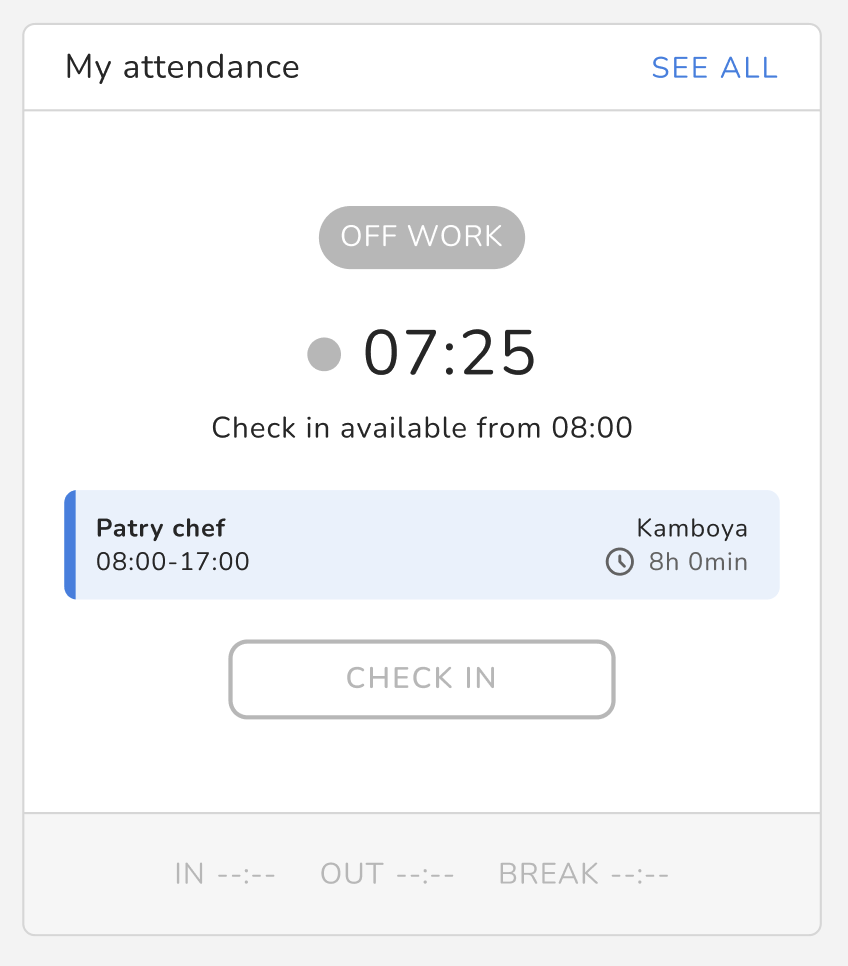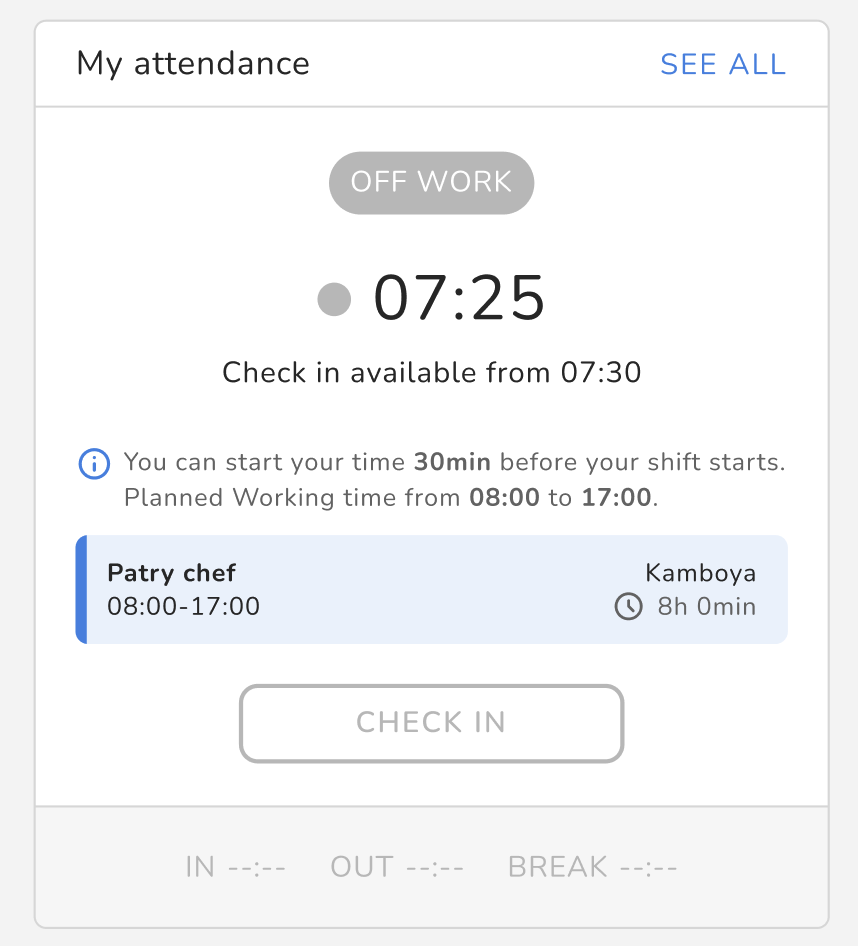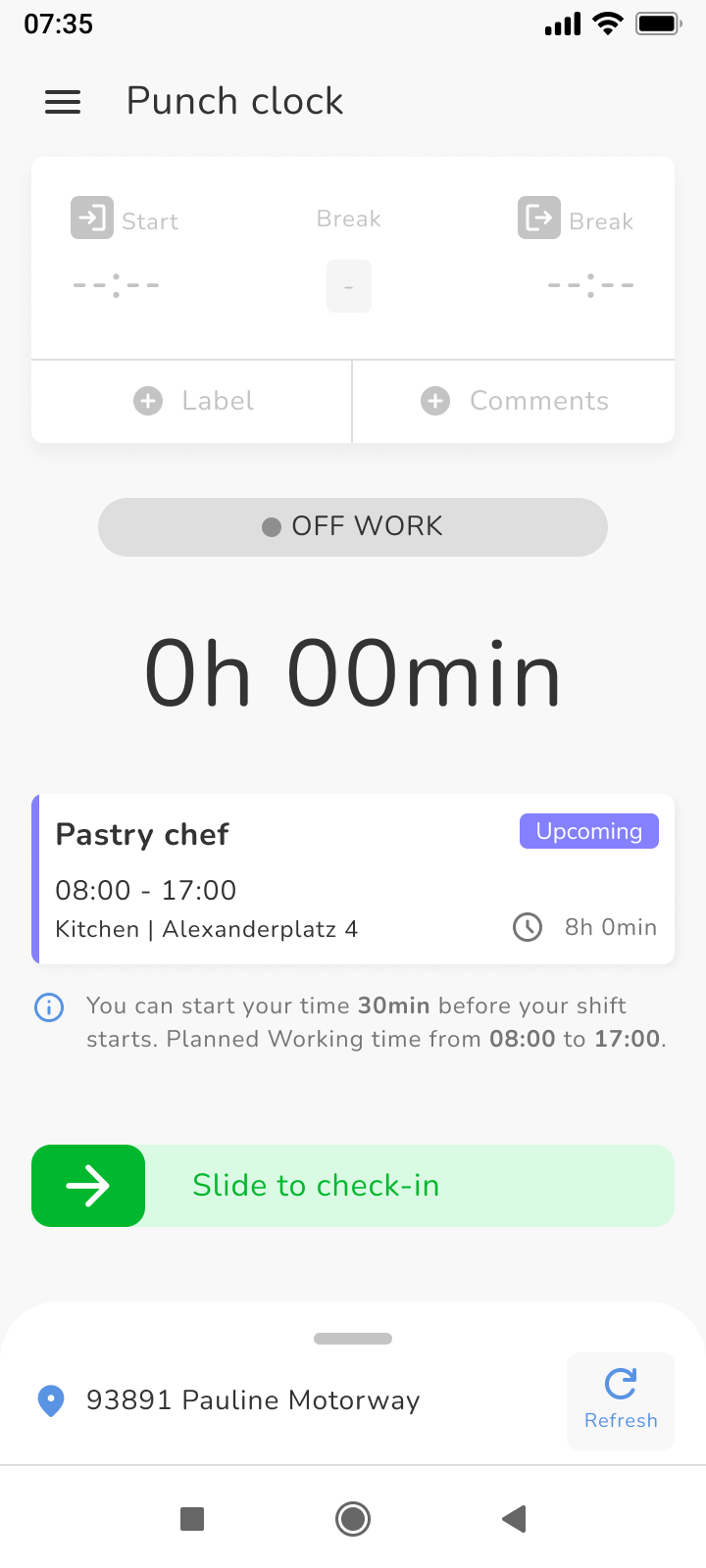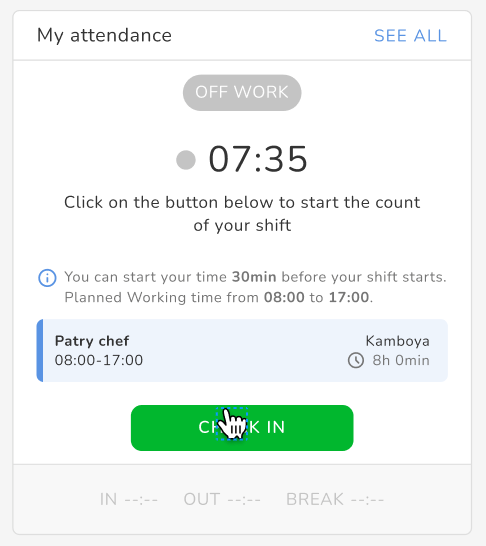This is a combined article for standard Kenjo customers and DSPs.We have developed a new feature that allows you to better control the time tracking of employees who work with flexible schedules or shifts. Previously, your shift employees could clock in before their scheduled shift start, and this time had to be paid as working time. Now you’re in control! Configure when your employees are allowed to clock in before their shift starts, and whether this buffer time should count as paid working time or only from shift start.
TABLE OF CONTENTS
- Configure your attendance policies for check-in limitations for scheduled or shift employees
- Effects and visibility for your employees
Configure your attendance policies for check-in limitations for scheduled or shift employees
The system checks whether employees in this policy have a fixed work schedule and/or a published shift. If an employee has BOTH a fixed work schedule AND a published shift, the work schedule will always be used as the basis for calculation.
Example: According to the work schedule, an employee starts at 9:00 AM on Mondays, but their published shift starts at 9:30 AM — time will be calculated from 9:00 AM.
Here you can restrict or allow employees to clock in before their planned working time.
- Enable the checkbox Use rule in attendance if you want to activate this feature.
- Now configure the settings — you have three options:
1. Employees can clock in from a standard time
If your company has standard early working times, this may be an option for you.
2. Employees are blocked if they try to clock in before their planned working time
Employees receive an error message when attempting to clock in.
3. Employees are allowed to clock in within a defined time window before their shift begins
Additionally, check the box if you do not want early clock-in time to count as paid working time. In this case, time is only counted and paid from the scheduled shift or work start. |
Effects and visibility for your employees
Below you can see how your settings appear from the employees’ perspective.
1. Employees can clock in starting from a defined time
They cannot clock in earlier. In this example, employees can only clock in starting 8:00 AM. Depending on the method, they will see these messages:
Mobile Kenjo App | Desktop Widget |
2. Employees are blocked if they try to clock in before their planned working time
| Mobile Kenjo App
| Desktop Widget |
3. Employees are allowed to clock in within a defined time window before their shift begins
Employee tries to clock in before the allowed time window: | |
 |  |
Within this option, there are two possibilities: 1. Employees can clock in the defined number of minutes before their planned shift or work start, and this time counts as paid working time. Employees clocks in within allowed time window and time starts counting as working time | |
 |  |
2. Employees can clock in early (e.g. 10 minutes before), but paid working time only starts at the originally planned time.
Here you can see how option 2 appears to employees — making it clear that the buffer time is not counted as working time:
| Employee clocks in within the allowed window, but working time starts at the scheduled time | |
Mobile Kenjo App | Desktop Widget
|
Was this article helpful?
That’s Great!
Thank you for your feedback
Sorry! We couldn't be helpful
Thank you for your feedback
Feedback sent
We appreciate your effort and will try to fix the article

